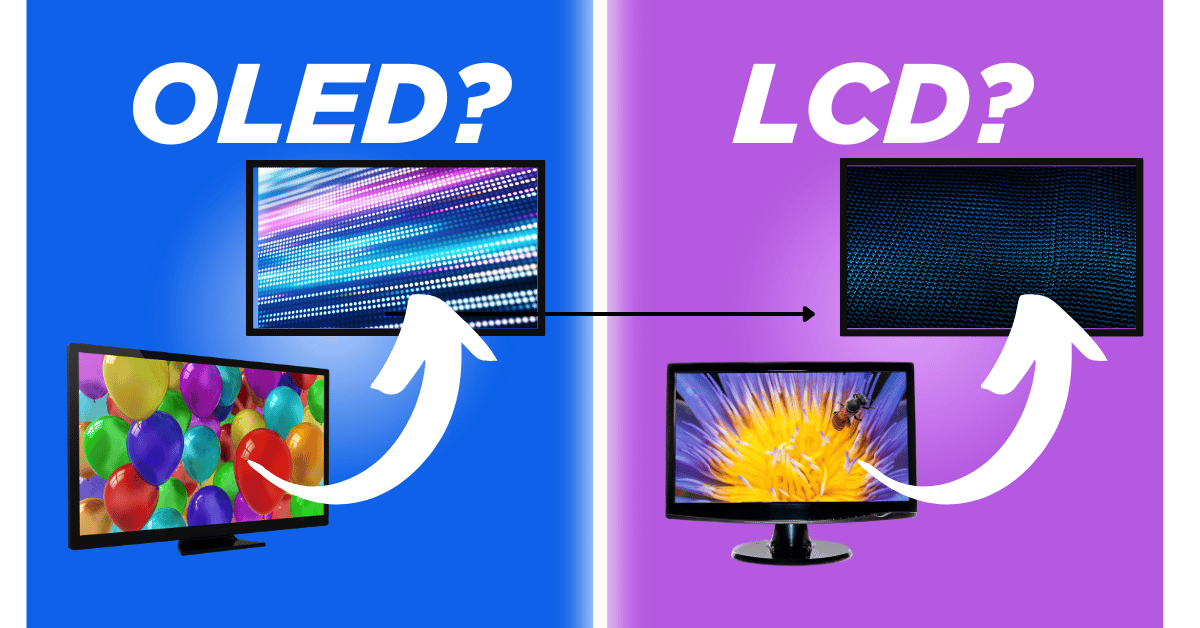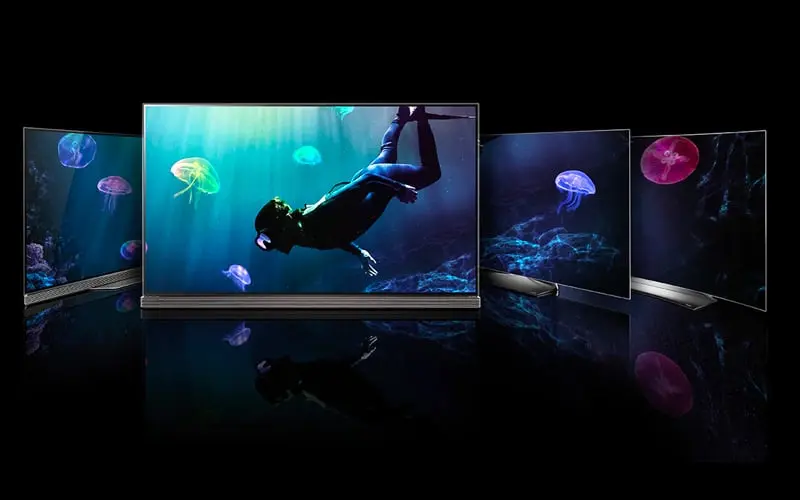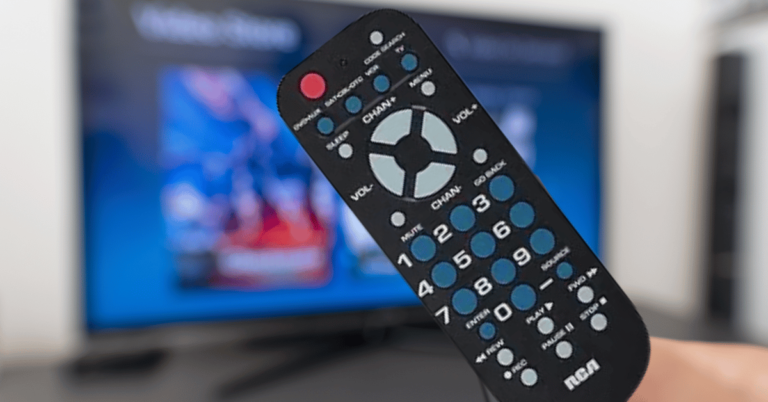OLED vs LCD: Which Display Technology is Right for You?

When choosing a new TV, the two most common options you’ll hear about are OLED and LCD. Both have their own strengths, but deciding which one is right for you depends on what you value most.
OLED TVs offer amazing contrast with deep blacks and vibrant colors, giving you a more lifelike picture.
On the other hand, LCDs are usually more affordable and still provide great picture quality. So, how do you choose?
Let’s take a closer look at each to help you make the best choice for your needs.
This article will provide a detailed comparison of OLED and LCD, covering everything from picture quality to price, durability, and energy efficiency.
By the end of this guide, you’ll have a better understanding of the strengths and weaknesses of each display type (OLED vs LCD) to help you make an informed decision.
Understanding OLED: What Makes It Different from LCD?
What is OLED?

OLED stands for Organic Light Emitting Diode. Unlike traditional displays that rely on a backlight to illuminate the screen, each pixel in an OLED display emits its own light. This means that each pixel can be turned on or off individually, resulting in perfect black levels and infinite contrast ratios.
This is a major advantage over LCD technology, which requires a backlight to make the screen visible. Because of this, OLED screens can achieve true blacks, deep contrast, and a more vibrant picture overall.
What is LCD?

LCD stands for Liquid Crystal Display. Unlike OLED, which relies on organic compounds to emit light, an LCD screen uses a liquid crystal solution that reacts to electrical currents. The crystals manipulate the light passing through them, but the light itself is provided by a separate backlight, typically made of LED (Light Emitting Diode) lights.
Since the crystals don’t produce light themselves, LCD screens typically can’t achieve accurate black levels. Instead, they rely on the backlight to shine through the liquid crystals, which limits their contrast and makes it harder to produce the deep blacks you’ll find on an OLED screen.
Pros and Cons of OLED Displays vs LCD Displays
Advantages of OLED
- Superior Picture Quality: OLEDs offer unparalleled picture quality. Because each pixel emits its light, it can achieve true black levels, resulting in infinite contrast ratios. This provides depth and clarity that LCDs simply can’t match.
- Better Viewing Angles: OLED displays have wider viewing angles compared to LCDs. You can watch an OLED screen from almost any angle without a significant drop in color accuracy or brightness, while LCDs tend to wash out when viewed from the side.
- Thinner Design: OLED screens are fragile, as they don’t require a backlight. This allows for ultra-thin televisions that are lightweight and sleek in design.
- Faster Response Time: OLED displays are known for their fast response times, making them ideal for fast-moving content such as sports or gaming.
Disadvantages of OLED
- Burn-In Risk: One of the biggest concerns with OLED technology is burn-in. Since OLED pixels are self-illuminating, they can degrade over time if static images (such as logos, news tickers, or video game HUDs) remain on the screen for too long. While burn-in is less of an issue than it used to be, it is still something to keep in mind.
- Price: OLED technology is still relatively expensive compared to LCD, which makes it less accessible for budget-conscious buyers. OLED TVs are generally higher-priced than their LCD counterparts, especially when considering larger screen sizes.
- Brightness: OLED displays are usually less bright than high-end LCDs, especially in well-lit rooms. While OLEDs have incredible contrast, they can struggle to reach the same peak brightness levels as some premium LCDs, which may be a factor for those with bright rooms or wanting to watch in direct sunlight.
Advantages of LCD
- Affordability: One of the biggest advantages of LCD displays is their affordability. LCDs are widely available and tend to be much cheaper than OLED TVs, making them the more budget-friendly option for those who want a large screen at a lower price.
- No Burn-In Issues: Unlike OLED, LCDs don’t suffer from burn-in. This makes them ideal for situations where static images (like logos or news tickers) are frequently on-screen.
- Brightness: LCDs, particularly those using LED backlighting (also known as LED-LCDs), can achieve much higher peak brightness levels than OLEDs. This makes LCD TVs a better choice for bright rooms or outdoor viewing.
- Wide Availability: LCDs come in a wide range of sizes, and you’ll find them across all price points. Whether you’re shopping for an entry-level TV or a high-end, premium model, there are plenty of options available in the LCD category.
Disadvantages of LCD
- Inferior Contrast: Since LCD screens rely on a backlight, they can’t produce true blacks, resulting in lower contrast ratios compared to OLED. This means dark scenes may appear more grayish rather than truly black.
- Viewing Angles: LCDs can struggle when viewed from angles off-center. The colors and brightness can shift, and the image may appear washed out.
- Thicker Design: LCDs are generally thicker than OLED displays because they require a backlight layer. While not necessarily bulky, they are still typically heavier and bulkier than OLEDs.
Picture Quality: OLED vs LCD – Which One Delivers Better Visuals?
When it comes to picture quality, OLED unquestionably takes the lead over LCD. OLED’s ability to turn individual pixels on and off means it can achieve perfect black levels, resulting in infinite contrast. This gives OLED displays an edge in terms of overall depth and realism in the image.
- Color Accuracy: OLED displays tend to offer superior color accuracy and more vivid, rich colors compared to LCDs. LCDs can have impressive color reproduction, but they generally don’t achieve the same level of color richness as OLED.
- Contrast: OLED’s infinite contrast, thanks to perfect black levels, gives it a distinct advantage when watching movies or shows with dark scenes. LCDs, on the other hand, struggle to achieve deep blacks due to the backlight, which can cause dark areas of the screen to appear grayish.
Winner: OLED for superior contrast, color accuracy, and overall picture quality.
Brightness and Color Accuracy: OLED vs LCD Performance Breakdown
- OLED: OLED screens typically have good brightness but not quite as much as premium LCDs. While OLED can reach high peak brightness levels, it is most impressive in dark viewing environments where the deep blacks and vibrant colors really shine.
- LCD: LCDs, especially those using LED backlighting, can achieve much higher peak brightness levels. This makes them a better option for bright rooms or environments with lots of ambient light.
Winner: LCD for brightness, but OLED wins in terms of overall color accuracy and depth.
Energy Efficiency: Does OLED or LCD Use Less Power?
OLED technology, due to the fact that each pixel produces its own light, tends to be less energy-efficient than LCDs. When displaying bright images, OLEDs can consume more power since each individual pixel is emitting light.
On the other hand, LCD displays with LED backlighting are generally more energy-efficient, especially when displaying bright content, since the backlight can be dimmed or adjusted without affecting individual pixels.
Winner: LCD is typically more energy-efficient than OLED.
Durability: OLED vs LCD Lifespan and Burn-In Issues
- OLED Burn-In: While OLEDs are known for their excellent picture quality, they come with the risk of burn-in, where static images can cause permanent ghosting on the screen. However, modern OLEDs include features like pixel-shifting, and automatic screen refreshes to help mitigate burn-in.
- LCD Durability: LCDs don’t have burn-in issues, but they can be subject to light bleed and backlight uniformity problems over time. However, LCDs typically have a longer lifespan compared to OLEDs, especially in terms of brightness retention.
Winner: LCD is more durable and doesn’t have burn-in concerns.
Cost Comparison: Is OLED Worth the Extra Money Over LCD?
One of the most significant factors in choosing between OLED and LCD is the price. OLED TVs are still more expensive than LCDs, particularly for larger screen sizes. The advanced technology and better picture quality come at a cost.
On the other hand, LCDs offer excellent value, especially for those on a budget, and are available in a wide range of price points. If you’re willing to sacrifice some picture quality for a more affordable price tag, then an LCD is a better choice.
Winner: LCD for affordability, but OLED for ultimate picture quality.
Which One Should You Choose: OLED or LCD?
Ultimately, the choice between OLED and LCD depends on your specific needs and preferences. Here are some factors to consider:
- Choose OLED if:
- You want the best picture quality with perfect blacks, deep contrast, and vibrant colors.
- You have a dark room where the superior contrast and color accuracy of OLED will shine.
- You are willing to invest in a higher-end TV.
- Choose LCD if:
- You are on a budget or prefer a more affordable option.
- You plan to use the TV in a bright room and want higher peak brightness.
- You don’t want to worry about burn-in and prefer a more durable screen.
Conclusion: OLED vs LCD – Which Is Better for You?
Both OLED and LCD displays have their advantages, and the right choice ultimately depends on what matters most to you: picture quality, price, durability, or energy efficiency. OLED offers superior contrast, color, and picture quality overall but at a higher price. LCD, on the other hand, offers excellent value, better energy efficiency, and is less prone to burn-in issues.
By understanding the strengths and weaknesses of each display technology, you can make an informed decision that suits your needs and budget.






